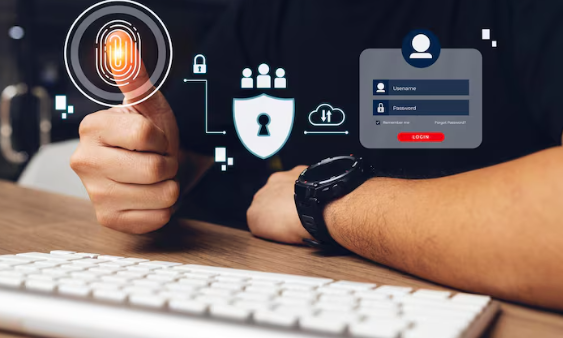Data analytics is changing online education in the same way that the internet changed how people buy things. Data analytics services have unlocked a domain of cutting-edge technological innovations, fundamentally altering the traditional teaching and learning approach. The COVID-19 pandemic forced school closures across the world and paved the way for the large-scale adoption of online education, with face-to-face learning taking a backseat. The pandemic significantly leveled up the adoption and investment of education technology, or ed-tech.
Even though data analytics is not a new concept in the education sector, the high requirement for remote learning opportunities during the pandemic expedited its application across university systems and schools. Today, Platform as a Service (PaaS) is also widely used by many educational institutions to enhance learning and cut down on expenses. Cloud services and apps let them have learning content that is always up to date, let students work together on projects at the same time, and let teachers access lesson plans from anywhere.
Ed-tech innovations are geared toward facilitating the future of how education is consumed, thought about, and resourced. Data analytics has especially helped chart a bold new future for ed-tech in many ways.
Student-Centered Learning Approach
Data analytics assists the students in gaining a better understanding of how they engage in learning activities, how such engagement can lead to specific outcomes, and how they can make use of these insights to enhance their learning experience. Data-savvy learners can effectively recognize the potential that can be achieved by extracting value from learning that has been recorded, transferred, and processed. Hence, they can use it to track their problems and progress.
In the same way, advanced analytics gives teachers data-backed information about how to improve educational content. It gives information about the quality of teaching and testing, which makes it easier to keep getting better. With Analytics, teachers can get immediate feedback on how their students are doing and change how they teach based on that. Data-rich models help students develop holistically.
Personalized Or Adaptive Learning
In higher education, one of the best ways to use learning analytics is to give students information about their current level in the context of their education or career goals, as well as information about what they need to do to reach these goals. The development of personalized learning processes is also helpful because it can lead students to certain learning materials based on how they have interacted with related digital content in the past.
Adaptive learning systems can change in real-time based on a student’s skills or abilities. These kinds of systems are made to collect and analyze data and make decisions to meet a certain goal. It aims to improve the learner’s performance with automated instructions and interventions. Data analytics can also be used to find students who are at risk of failing so that they can get more help and be encouraged to go down a path that will lead to academic success.
Data Encryption Makes Online Exams More Secure
Data encryption is an important component of advanced analytics services and involves securing data to prevent it from getting hacked. This is achieved by the addition of binary codes or encryption to the existing data that can be decoded solely by the receiver. For example, data encryption allows examinations to be carried out securely by effectively safeguarding the exam data and question bank. It also helps keep away the risk of result manipulation without valid credentials, as only authorized personnel can do the decoding.
Development Of Predictive Models
Data analytics can assist educators in identifying the gaps students are experiencing in the academic curriculum and allow them to tailor the learning modules in a manner that aligns with the learning approach of every student. Such data analytics services also help educational institutions to prepare for future students.
Virtual profiles are created uniquely on the basis of the online learning interactions, assessment results, and demographic details of future students. This data is subsequently used to develop predictive learning models that can provide valuable insights. Predictive learning models basically identify probable learning outcomes on the basis of the experience of students with similar profiles from previous academic years.
Universities, colleges, and schools should monitor the long-term efficacy of predictive models and use them to support both the teachers and the students better.
Conclusion
Data analytics in the education industry is truly a game changer and can optimize institutional efficiency while enabling students to avail of personalized learning opportunities. Moreover, it plays a critical role in the enhancement of student performance. The global market for big data analytics in the educational sector is expected to rise to $47.82 billion by the year 2027. It is also expected to experience market growth of 20.79% CAGR between 2021 and 2027. Even though the use of data analytics in ed-tech is still in its fledgling stages, educational institutions worldwide should welcome the technology with open arms as it can revolutionize how education is delivered.
FAQs
Ed-tech or Educational Technology implies the use of hardware, software, or even cloud solutions like the Platform as a Service to enhance teacher-led learning in classrooms while improving the education outcomes of the students.
Data analytics make it fairly simple to track student performance online. It also allows them to competently monitor and track how much each student spends on virtual learning and when submitting their school projects.
Yes. Data allows education to better understand each student’s learning styles, weaknesses, and strengths. Based on this information, teachers can change their lessons to meet the needs of each student and improve their learning.
Data analytics could help colleges and universities make their faculty more productive as a whole. For example, it allows the faculty to make data-backed conclusions about curriculum designs, tutoring, course sequencing, and more. In addition, data analytics can be used to gain insights into how the curriculum can be effective and identify student engagement possibilities.



